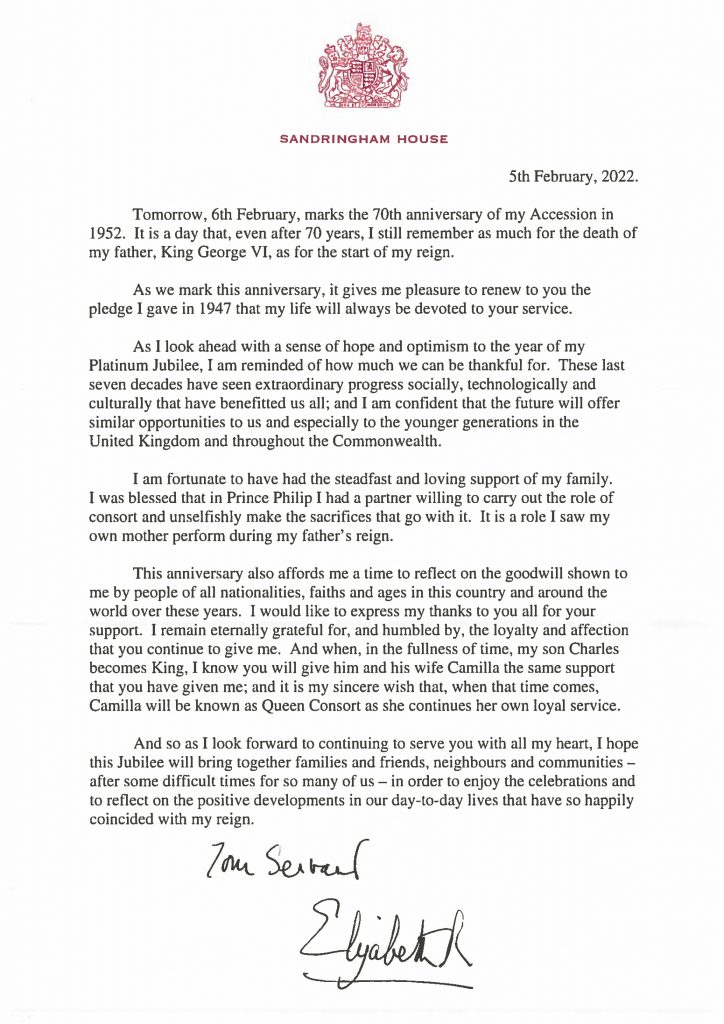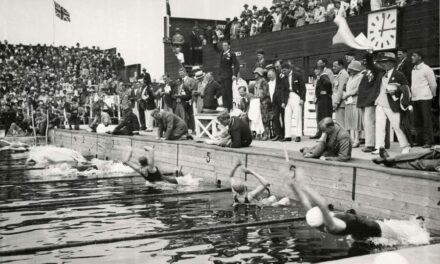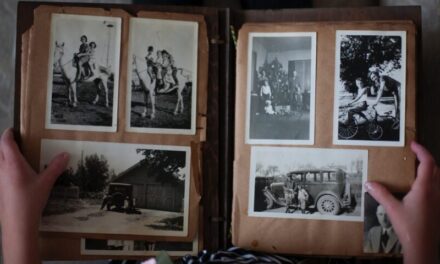In 1952, King George VI’s health was poor and illness forced him to abandon a proposed Commonwealth tour. Princess Elizabeth, accompanied by Prince Philip, took his place. On Wednesday 6 February 1952, she received the news of her father’s death and her own Accession to the throne while staying in a remote part of Kenya. In an instant, she had ceased to be Princess Elizabeth and became Queen Elizabeth II.
A new Monarch comes to the throne at the moment of death of the previous Monarch, hence the phrase, ‘The King is dead, long live The King! (or Queen)’
Following the news, the tour was abandoned, and the young Princess flew back to Britain as Queen. She was greeted by Prime Minister Winston Churchill and other officials at the airport before returning to Clarence House. She was officially crowned in a Coronation ceremony at Westminster Abbey the following year, on 2 June 1953.
Her Majesty’s Accession came as she was raising a young family: Prince Charles was three years old and Princess Anne just one when The Queen learnt of her father’s death. Her new duties had to take precedence over family life, with long overseas tours taking her away for months at a time.
On the eve of the 70th anniversary of her Accession to the throne, The Queen has written a message thanking the public and her family for their support, and looking forward to Platinum Jubilee celebrations over the coming year.
For more information see https://www.royal.uk/accession-day-2022





